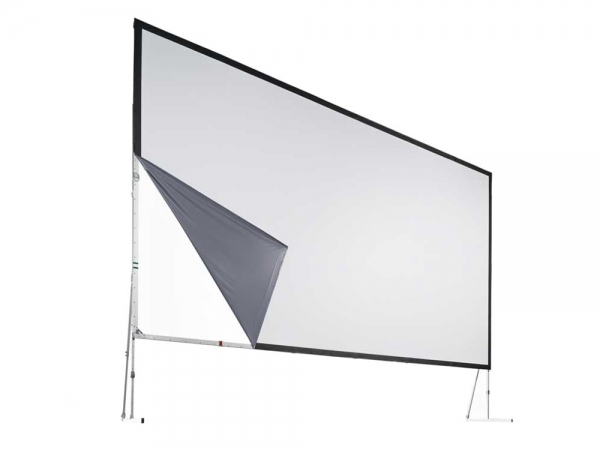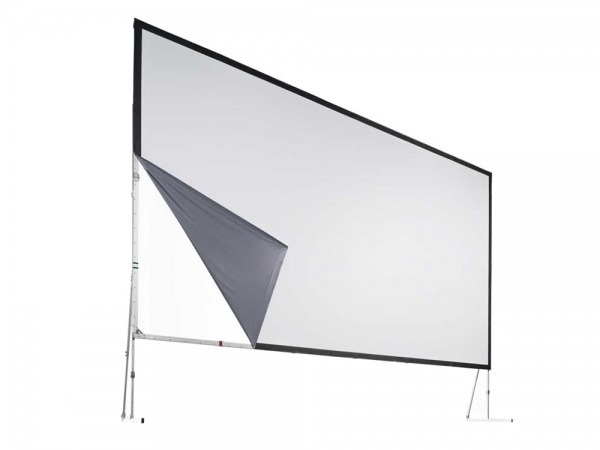Used powered stage monitors
22 August 2023

|
Looking to elevate your live performances to the next level? Choosing the perfect used powered stage monitors can make all the difference. These essential pieces of equipment can enhance your sound quality, provide crystal-clear monitoring, and help you deliver an unforgettable performance. But with so many options out there, how do you find the right ones for your next gig? That's where we come in. In this article, we'll walk you through the key factors to consider when selecting used powered stage monitors. From understanding your specific needs and budget to assessing the condition and reputation of the seller, we'll provide you with expert tips and insights to make an informed decision. Whether you're a solo artist, band member, or event organizer, we've got you covered. Don't settle for subpar stage monitors that hinder your performance. With our guidance, you'll be able to find the perfect used powered stage monitors that meet your requirements and help you deliver your best show yet. So let's dive in and discover the steps to finding your ideal stage monitors. Advantages of using powered stage monitors Powered stage monitors offer several advantages over passive monitors. These monitors have built-in amplifiers, eliminating the need for external power amps. This not only simplifies your setup but also reduces the amount of gear you need to transport. Additionally, powered stage monitors are designed to work optimally with their built-in amplifiers, ensuring better performance and efficiency. They also have built-in protection features that safeguard against potential damage. Another advantage of powered stage monitors is their versatility. They can be used in a variety of live performance settings, from small clubs to large outdoor venues. They provide consistent and reliable audio monitoring, allowing you to hear yourself and your bandmates clearly on stage. This ensures a cohesive and tight performance, enhancing the overall experience for both you and your audience. Moreover, powered stage monitors are often easier to control and adjust. Many models come with built-in EQ controls, allowing you to fine-tune the sound to your liking. This flexibility enables you to adapt to different venues and acoustics, ensuring optimal sound quality every time. In summary, powered stage monitors offer the convenience of built-in amplification, versatility in different performance settings, and easier control and adjustment. These advantages make them a popular choice for musicians and performers looking to enhance their live performances. Understanding the different types of powered stage monitors Before diving into the selection process, it's important to understand the different types of powered stage monitors available. There are two main types: floor monitors and in-ear monitors. Floor monitors, also known as wedge monitors, are placed on the stage floor facing the performers. They provide individual audio monitoring for each musician, allowing them to hear their own instrument or vocals. Floor monitors come in various sizes and configurations, from small compact models to larger ones with multiple drivers for more detailed sound reproduction. |
 |
|
In-ear monitors, on the other hand, are worn by the musicians in their ears. They provide a more personalized and isolated monitoring experience. In-ear monitors are particularly useful in situations where stage volume needs to be kept low or for performers who require precise monitoring of their own performance. They offer excellent sound isolation, allowing musicians to focus on their playing without being affected by external noise. Both floor monitors and in-ear monitors have their advantages and disadvantages, and the choice ultimately depends on your specific needs and preferences. Floor monitors provide a more traditional and interactive stage experience, while in-ear monitors offer a more controlled and personalized monitoring solution. Factors to consider when choosing powered stage monitors Now that you have a basic understanding of the different types of powered stage monitors, let's explore the key factors to consider when selecting the right ones for your next gig. Sound quality: The most important factor to consider is the sound quality of the stage monitors. You want monitors that accurately reproduce your instrument or vocals without distortion or coloration. Look for models with high-quality drivers and a frequency response that matches your musical style. It's also worth considering the coverage pattern of the monitors to ensure even sound distribution on stage. Power and output: The power and output of the monitors should be sufficient for your performance needs. Consider the size of the venue and the volume levels you typically play at. Make sure the monitors have enough power to fill the space without distortion. It's also important to check the connectivity options of the monitors to ensure compatibility with your audio setup. Build quality and durability: Since you're considering used powered stage monitors, it's crucial to assess the build quality and overall condition of the monitors. Look for signs of wear and tear, loose connections, or any other potential issues. Ensure that the monitors are durable enough to withstand the rigors of live performances and transportation. User-friendly features: Consider the ease of use and user-friendly features of the monitors. Look for models with intuitive controls and clear labeling. Features such as EQ controls, adjustable angles, and multiple input options can make your setup and sound adjustments easier and more efficient. |
 |
|
Reviews and reputation: Before making a purchase, it's important to research the brand and model of the monitors you're interested in. Read reviews from other musicians and performers to get an idea of their experiences with the monitors. Pay attention to any common issues or praises mentioned in the reviews. Additionally, consider the reputation of the seller or dealer from whom you're buying the used monitors. Look for trusted sellers with a track record of providing quality products and customer support. By considering these factors, you'll be able to narrow down your options and find the perfect used powered stage monitors that meet your specific requirements. Researching and comparing different brands and models Now that you have a clear understanding of the factors to consider, it's time to start researching and comparing different brands and models of powered stage monitors. The market is flooded with options, ranging from well-known brands to lesser-known manufacturers. Here's a step-by-step guide to help you navigate through the research process: Identify your needs: Start by identifying your specific needs and requirements. Consider factors such as the size of the venues you typically perform in, the type of music you play, and the number of musicians in your band. This will help you determine the power, coverage, and configuration of the monitors that will best suit your needs. Make a shortlist: Based on your needs, create a shortlist of brands and models that align with your requirements. Consider factors such as sound quality, power output, durability, and user-friendly features. Read reviews and gather information about each model to assess their suitability. Compare specifications: Once you have a shortlist, compare the specifications of each model. Look for key specifications such as frequency response, power rating, impedance, and coverage pattern. Compare these specifications to your specific requirements to ensure a good match. Read user reviews: User reviews can provide valuable insights into the real-world performance and reliability of the monitors. Look for user reviews on reputable websites and forums. Pay attention to any recurring issues or positive feedback that aligns with your needs. Consider budget and value: While price shouldn't be the sole determining factor, it's important to consider your budget and the overall value offered by each model. Assess the features, build quality, and reputation of the brand to determine if the price is justified. Balance your budget with the quality and performance you seek. Demo if possible: If possible, try to demo the monitors before making a final decision. This will give you a firsthand experience of their sound quality, ease of use, and overall performance. It's always beneficial to hear the monitors in action and assess their suitability for your specific needs. By following these steps, you'll be able to narrow down your options and make an informed decision based on your research and comparisons. Considering budget and cost-effectiveness Budget is an important consideration when choosing used powered stage monitors. While it's tempting to go for the cheapest option available, it's crucial to strike a balance between your budget and the quality of the monitors. Here are some tips to help you make a cost-effective decision: Set a budget: Determine your budget range before starting the research process. This will help you filter out options that are outside of your budget and focus on those that offer the best value within your price range. Consider long-term investment: While used equipment may come at a lower price, it's important to consider the long-term investment. Look for monitors that are known for their durability and reliability. Investing in monitors that will last you for years to come can save you money in the long run, even if the upfront cost is higher. Assess the condition: When buying used powered stage monitors, thoroughly assess their condition. Look for any signs of wear and tear, loose connections, or potential issues. Ask the seller about the history of the monitors and if they have been regularly maintained or serviced. Warranty and return policy: Check if the used monitors come with any warranty or return policy. This can provide you with peace of mind and protection against any unforeseen issues. Be sure to read and understand the terms and conditions of the warranty or return policy before making a purchase. Consider package deals: Some sellers may offer package deals that include additional accessories or equipment. Assess the value of these package deals and determine if they align with your needs. While it may increase the overall cost, it can provide you with a more comprehensive setup that meets all your requirements. By considering these budget-related factors, you'll be able to make a cost-effective decision that meets your needs without compromising on quality and performance. Conclusion and final recommendations Choosing the perfect used powered stage monitors for your next gig is a crucial decision that can significantly impact your live performances. By understanding the advantages of powered stage monitors, the different types available, and the factors to consider, you can make an informed decision that meets your specific requirements. Remember to research and compare different brands and models, considering factors such as sound quality, power output, build quality, user-friendly features, and reputation. Also, factor in your budget and aim for a cost-effective solution that offers long-term value. Ultimately, the perfect used powered stage monitors for your next gig will depend on your unique needs, preferences, and budget. Take your time, do your research, and make a decision that will elevate your live performances and help you deliver an unforgettable show. With the right stage monitors, you'll be able to hear yourself clearly on stage, enhance your performance, and leave a lasting impression on your audience. |
 |
